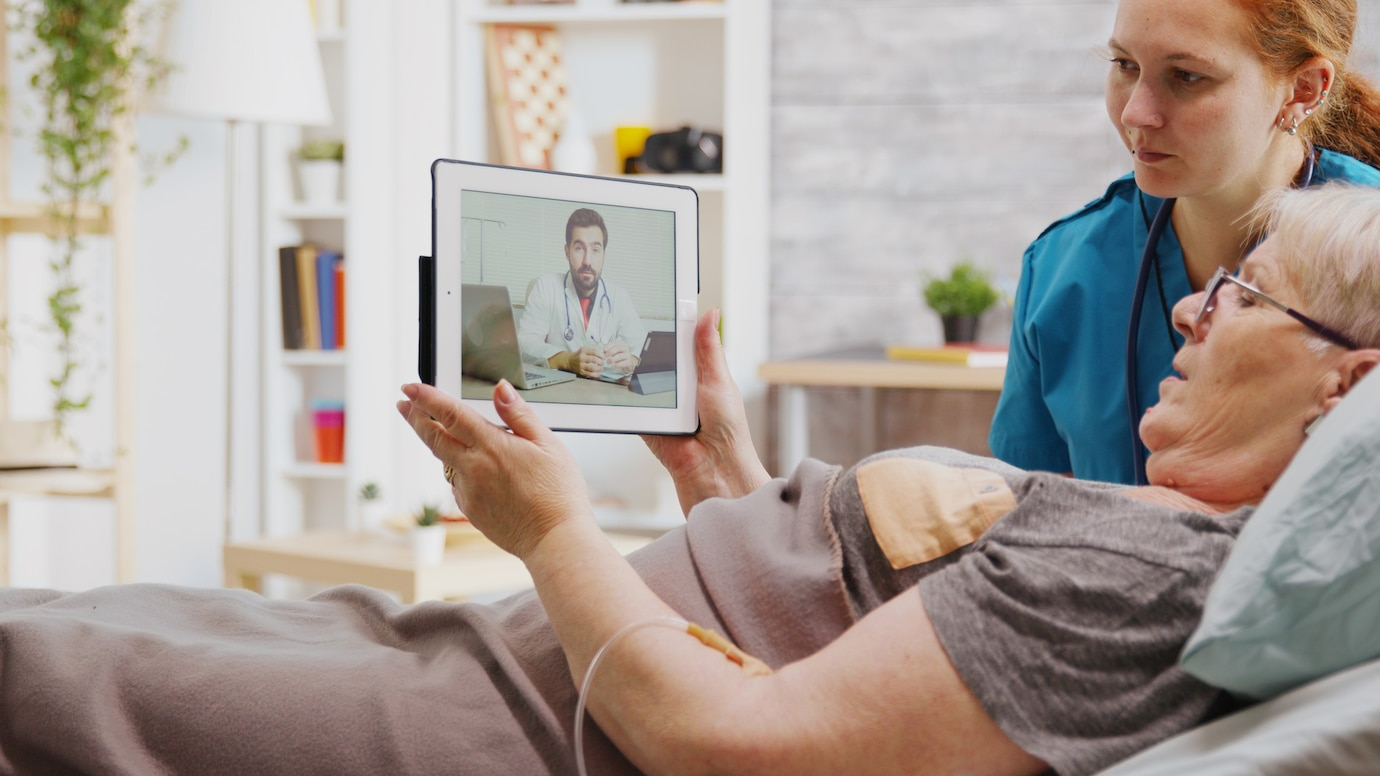Benefits of Telehealth for Occupational Therapy
Discover the many benefits of telehealth for occupational therapy and learn how it can provide effective treatment for your child.
Since the global pandemic that drove us into our homes in 2020, teletherapy has gained prominence in the health sector. However, not everyone is comfortable with the idea of receiving therapy at home, without the luxury of being face to face with their practitioner. In this blog, we explore the benefits of telehealth for occupational therapy and how it offers just as many positive benefits as traditional therapy.
What is Telehealth Occupational Therapy?
Telehealth is any form of medical service or treatment done over the phone or the Internet. This can be in the form of video calls or even simple emails. However, telehealth occupational therapy is typically done as video call sessions for most effective outcomes. This modern form of communication does not effect the quality of the session.
Benefits of Telehealth:
- 1. Convenience
- 2. Allows you to spend more time with your family
- 3. Ability to alter the home environment
- 4. Enhanced Opportunities for Parent Education
- 5. Maximizing Sessions
- 6. Opportunity To Replicate Therapeutic Tools
- 7. Personalization of Treatment
- 8. Eliminates Geographical Barriers
- 9. Home Recommendations
- 10. Encourages Regular Attendance

1. Convenience
The most obvious benefit of telehealth is the absence of having to transport your child to therapy sessions. Juggling school schedules, extracurricular activities, and therapy sessions can be tedious and time-consuming. Telehealth offers a welcome solution by eliminating the time and hassle of traveling to occupational therapy appointments.
2. Allows you to spend more time with your family
With telehealth, your child can receive occupational therapy from the comfort and familiarity of your home. This eliminates the stress of transitions and allows the entire session to be focused on your child’s progress. Thus, the ultimate benefit of telehealth is freeing up valuable time in your day. The time you used to spend driving to and from appointments can now be used for more quality time with your family or even helping your child practice their newly learned skills.
3. Ability to alter the home environment
Another unique benefit of telehealth is that you can tailor therapy to your child’s specific environment. Unlike traditional clinic settings, therapists can virtually assess your home layout and suggest modifications to maximize treatment with functional skills. This includes receiving guidance on adapting your home’s layout and routines for specific treatments. The same goes for therapeutic activities – therapists can suggest using familiar toys, furniture, or specific spaces within your home to create a personalized and engaging therapy session.
4. Enhanced Opportunities for Parent Education
Telehealth encourages a collaborative environment that benefits both you and your child. One of the most unique benefits of telehealth is that it allows for open dialogue throughout the session. You can ask questions and receive the therapist’s full attention in real time. Furthermore, occupational therapy telehealth sessions often involve working on hands-on tasks together. The therapist can guide you as you implement their suggestions within your home environment, including specific verbal and visual cues to give your child to promote independence. This method boosts your confidence as a parent and allows you to follow through with the recommended home program.
5. Maximizing Sessions
Another essential benefit of telehealth is that it keeps the focus squarely on your child’s therapy. Unlike traditional clinic settings where transitions and waiting room distractions can eat up time, telehealth allows for a more streamlined session. There’s no need to factor in travel time, settling into a new environment, or environmental distractions. Instead, the entire session can be dedicated to direct, targeted interventions that maximize your child’s active participation in therapeutic activities.
6. Opportunity To Replicate Therapeutic Tools
One of the hidden benefits of telehealth lies in its ability to transform everyday household items into powerful therapy tools. Therapists can provide parents with a list of readily available materials before each session. This saves time and money and opens parents’ eyes to the therapeutic potential of everyday objects.
7. Personalization of Treatment
Telehealth also allows for a personalized approach. Therapists can integrate a child’s favorite toys into the session. This method fosters engagement during the session and empowers parents to replicate occupational therapy activities at home. This fixes a common issue for therapy-going children and reinforces the targeted skills outside therapy. Having all the necessary materials readily available at home increases the likelihood of children independently engaging in therapeutic tasks, promoting long-term progress.
8. Eliminates Geographical Barriers
Telehealth isn’t just convenient; it’s transformative for children with special needs who don’t have access to regular therapy in their local area. This means that telehealth has benefits in rural areas or communities with limited access to occupational therapists. Traditional in-person therapy often requires travel to specialized clinics or hospitals, which can be time-consuming, expensive, and challenging for families with complex backgrounds. Telehealth eliminates these geographical limitations by allowing therapists to connect with children virtually, regardless of location.
9. Home Recommendations
Therapists are able to observe how you navigate doorways, use furniture, and perform daily tasks within your home environment. This can reveal potential obstacles that might not be apparent in a clinical setting. Ultimately, telehealth assessments empower therapists to identify areas where you can improve independence in your home and provide recommendations.
10. Encourages Regular Attendance
Let’s face it: traditional therapy appointments can sometimes feel like a chore for children. Attending sessions can become frustrating because of the travel time, unfamiliar environment, and potential for waiting room blues. But, an often unnoticed benefit of telehealth is that it allows your child to participate in therapy from the comfort and familiarity of their own home. This eliminates anxiety associated with traveling to a new place and will enable them to relax and focus on the session.
